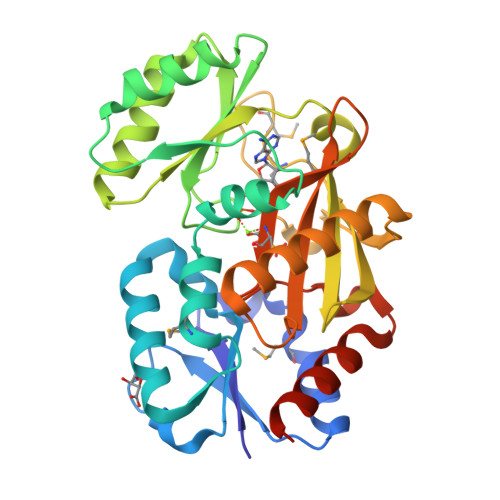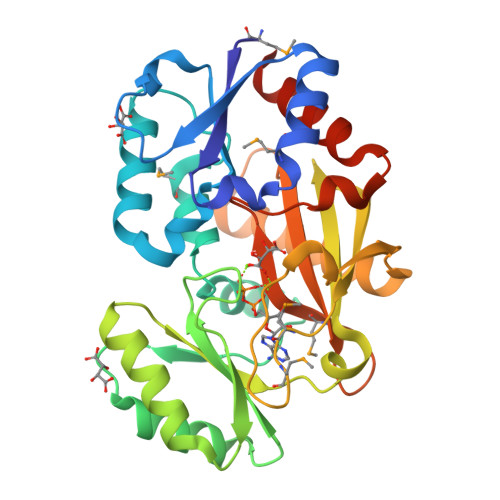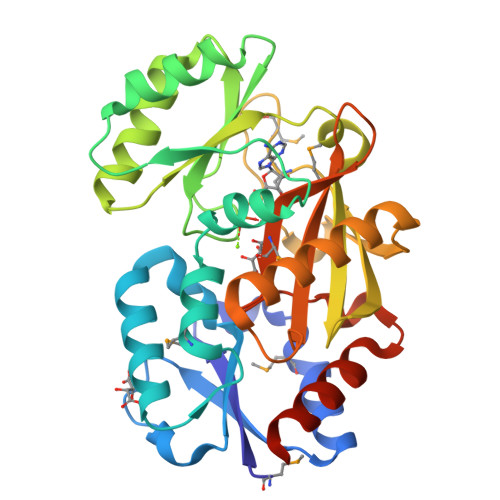Cyclization mechanism catalyzed by an ATP-grasp enzyme essential for d-cycloserine biosynthesis.
Matoba, Y., Uda, N., Kudo, M., Sugiyama, M.(2020) FEBS J 287: 2763-2778
- PubMed: 31793174
- DOI: https://doi.org/10.1111/febs.15163
- Primary Citation of Related Structures:
6JIL - PubMed Abstract:
In the biosynthetic pathway of an antitubercular antibiotic d-cycloserine (d-CS), O-ureido-d-serine (d-OUS) is converted to d-CS. We have previously demonstrated that DcsG, classified into the ATP-grasp superfamily enzyme, catalyzes the ring formation to generate d-CS, which is accompanied by the cleavage of a bond in the urea moiety of d-OUS to remove a carbamoyl group. Although the general ATP-grasp enzymes catalyze an ATP-dependent ligation reaction between two substrates, DcsG catalyzes specifically the generation of an intramolecular covalent bond. In the present study, cyanate was found in the reaction mixture, suggesting that carbamoyl group is eliminated as an isocyanic acid during the reaction. By the crystallographic and mutational investigations of DcsG, we anticipate the residues necessary for the binding of d-OUS. An acylphosphate intermediate must be bound at the narrow pocket of DcsG in a folded conformation, inducing the bond cleavage and the new bond formation to generate cyanate and d-CS, respectively. DATABASE: Structural data are available in Protein Data Bank database under the accession number 6JIL.
Organizational Affiliation:
Faculty of Pharmacy, Yasuda Women's University, Hiroshima, Japan.

























